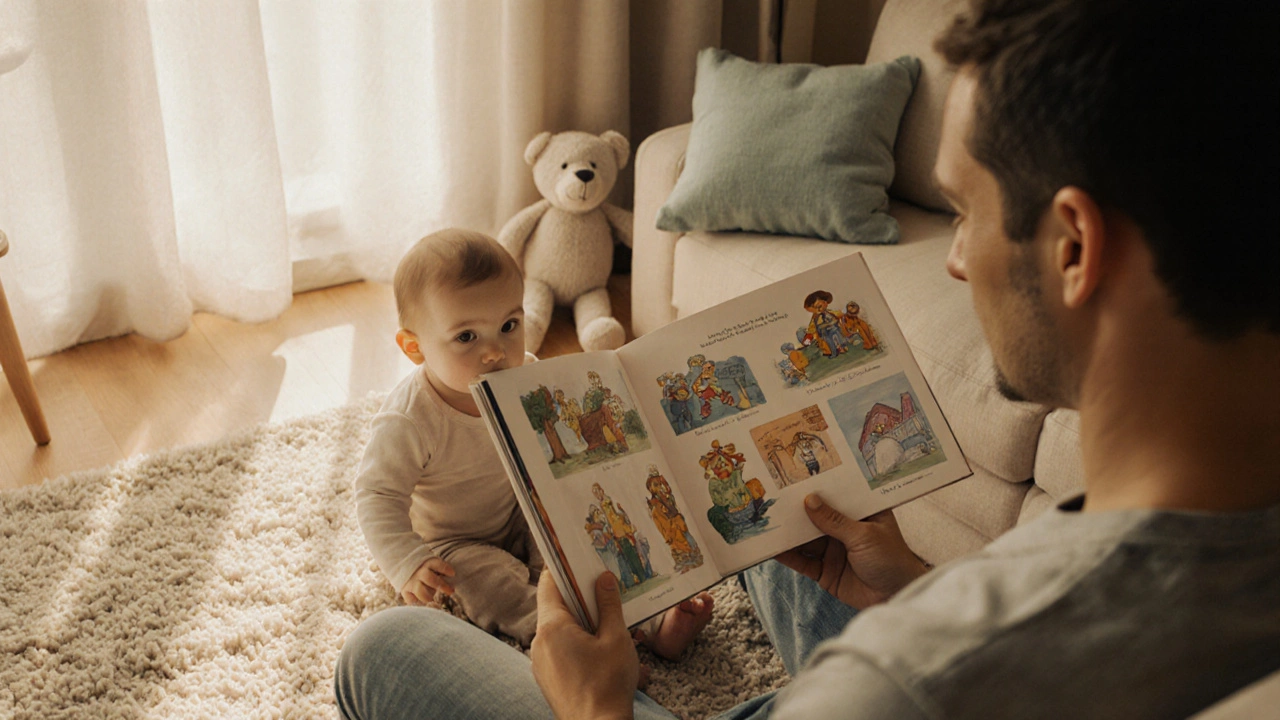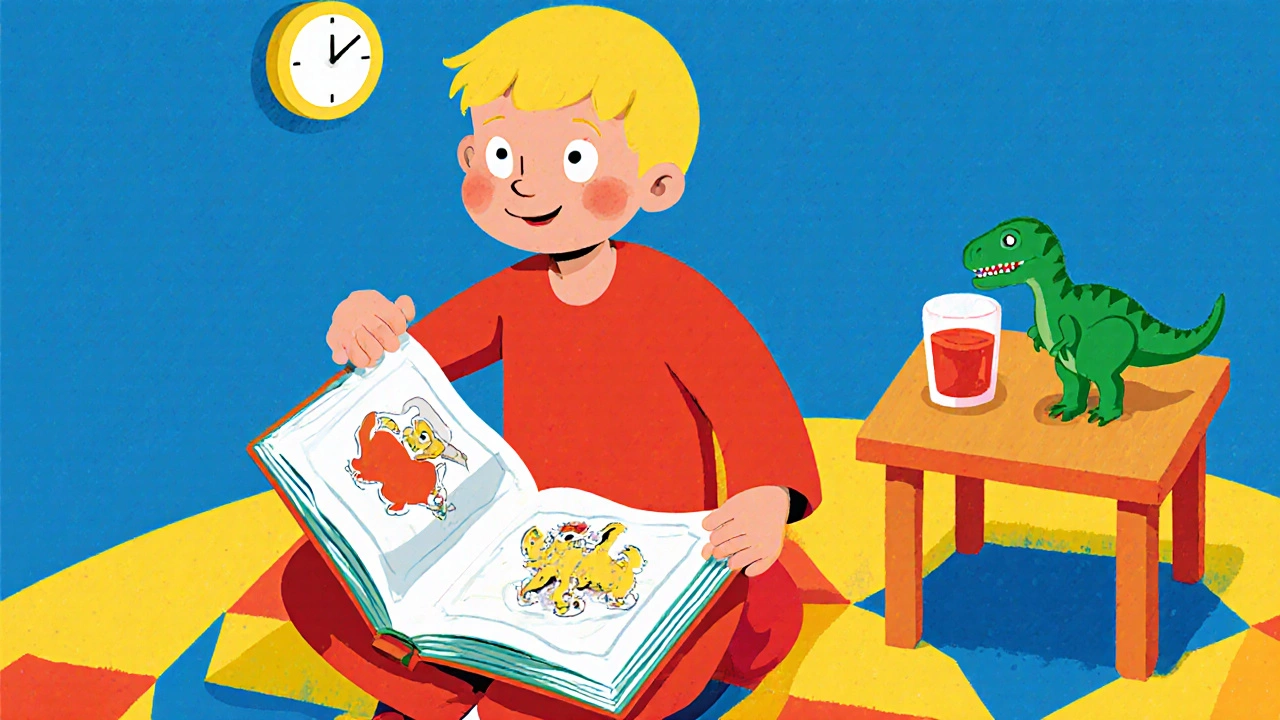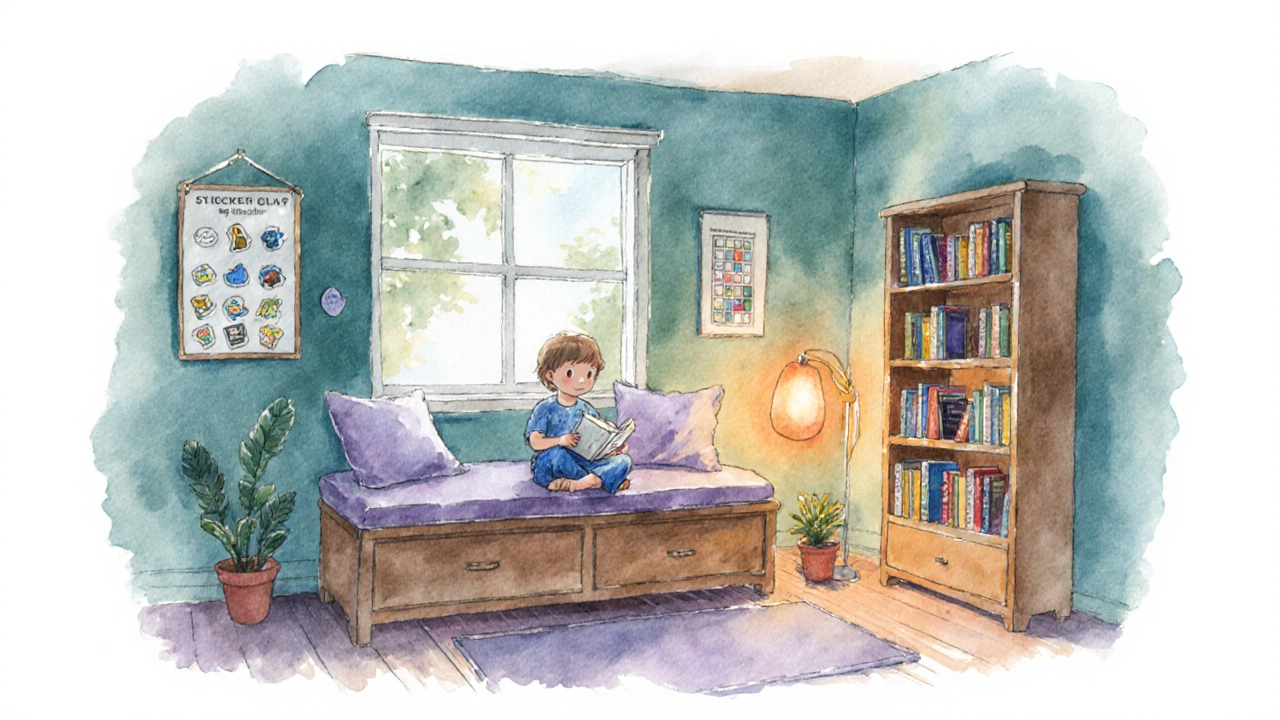When to Stop Reading Aloud to Your Child: Age Guide
 Oct, 15 2025
Oct, 15 2025
Read-Aloud Transition Calculator
When Should Your Child Read Independently?
When it comes to reading aloud to children is the practice of parents or caregivers verbally delivering storybooks to kids, fostering language, imagination, and bonding, the question isn’t "if" you should do it, but "when" you should start easing off. Many parents wonder if there’s a magic number that says it’s time to hand the book over. The truth is, the shift is less about a fixed calendar date and more about a mix of developmental cues, a child’s interest, and the family’s routine.
Why reading aloud matters in the first few years
Early exposure to picture books books with large illustrations and simple text designed for toddlers builds the foundation for later literacy. Research from the University of Cambridge shows that children who hear daily stories develop stronger neural pathways for language processing by age three.
Beyond brain growth, parent‑child bonding the emotional connection formed through shared activities like reading improves confidence and creates a safe space for curiosity. Those early moments set the stage for a lifelong love of reading.
Key developmental milestones that signal a shift
Here’s a practical age‑by‑age guide. Keep in mind each child is unique, but most hit these markers around the listed ages.
- 0‑12 months: Responds to the rhythm of your voice, enjoys colorful pictures, and begins to turn pages with help.
- 12‑24 months: Starts to point to objects, repeats words, and can sit through a 5‑minute story.
- 2‑3 years: Uses simple sentences, asks “what’s that?” about illustrations, and shows a preference for familiar characters.
- 3‑4 years: Recognises story structure (beginning, middle, end), can retell basic plots, and begins to read simple words on their own.
- 4‑5 years: Reads short sentences, enjoys longer picture books, and starts requesting books they can "look at by themselves".
- 5‑6 years: Transitions to early chapter books shorter narrative books divided into sections for early readers, can stay engaged for 15‑20 minutes, and may ask for a “quiet reading corner”.
When you notice a child consistently reaching for the book independently, it’s a cue that the traditional read‑aloud routine is winding down.
Signs it’s time to ease off the narration
Watch for these behaviors, which indicate readiness for more independent interaction with text:
- They start flipping pages without prompting.
- They ask you to sound‑out words instead of listening to the story.
- They become impatient during long read‑aloud sessions.
- They request to “read the book yourself” or pick a new book without you.
- They discuss plot details with peers or teachers.
If any of these pop up regularly, consider adjusting the routine rather than stopping abruptly.

How to transition smoothly
The goal is to keep the love of stories alive while encouraging independence. Here are actionable steps:
- Introduce shared reading. Sit together, but let the child turn pages and read simple sentences aloud. Offer gentle guidance when they stumble.
- Swap picture books for early chapter books. Titles like “Magic Tree House” or “Junie B. Jones” strike a balance between familiar illustrations and longer narratives.
- Create a cozy reading nook. A small cushion, a low shelf of books, and a soft lamp give a sense of ownership.
- Set short, regular reading times. Instead of a 30‑minute bedtime story, try two 10‑minute independent reading slots during the day.
- Celebrate milestones. A sticker chart for each finished book reinforces progress without pressure.
These steps keep the ritual alive, but shift the focus from you narrating to the child exploring.
Common pitfalls and how to avoid them
Even with the best intentions, parents can trip up during the transition. Here’s what to watch out for:
- Stopping too early. If you pull the plug before the child shows readiness, you risk losing interest. Use the signs above as a safety net.
- Replacing reading with screen time. Digital devices might seem convenient, but they don’t provide the same interactive dialogue. Keep screen use limited to supplemental content.
- Forcing “big” books. Hand‑picking dense novels can overwhelm a young reader. Stick to age‑appropriate chapter books that match their vocabulary.
- Neglecting discussion. Even as the child reads alone, ask open‑ended questions (“What do you think will happen next?”) to keep the conversation alive.

Quick checklist - when to shift from read‑aloud
| Indicator | Typical Age Range | Action |
|---|---|---|
| Child flips pages without prompting | 3‑4 years | Introduce shared reading |
| Reads simple sentences independently | 4‑5 years | Offer early chapter books |
| Requests a quiet corner for reading | 5‑6 years | Set up a personal reading nook |
| Shows impatience during long stories | 4‑5 years | Trim read‑aloud sessions to 10‑15 minutes |
| Talks about plot with peers | 5‑6 years | Encourage discussion questions |
Answering the core question
There isn’t a one‑size‑fits‑all answer, but most experts agree that by the time a child reaches stop reading to child age of around five to six years, they’re ready to move toward independent reading. The exact moment will depend on the signals listed above, plus your family’s schedule and the child’s personal interest.
Frequently Asked Questions
Can I keep reading aloud after my child can read independently?
Absolutely. Many families treat read‑aloud time as a special bonding ritual rather than a teaching tool once the child can read on their own. Switching to “storytime for fun” keeps the habit alive without pressuring the child to perform.
What if my child shows interest in reading earlier than four?
Start introducing simple word books and let them try to sound out words. Keep the sessions short and celebrate each new word they master. Early enthusiasm can accelerate literacy, but keep expectations realistic to avoid frustration.
Should I use digital e‑books instead of paper books during the transition?
Paper books still win for tactile feedback and reduced screen glare. If you do use e‑books, choose devices with e‑ink displays and limit session length to keep eye strain low.
How can I tell if my child is bored during read‑aloud time?
Watch for restlessness, frequent glances at a clock or device, and short attention spans. If you notice these, shorten the story or switch to an interactive activity like acting out a scene.
What are good first chapter books for a 5‑year‑old?
Series like "The Magic Tree House", "Ivy and Bean", and "Elephant & Piggie" offer simple language, vivid illustrations, and manageable chapter lengths that suit early readers.